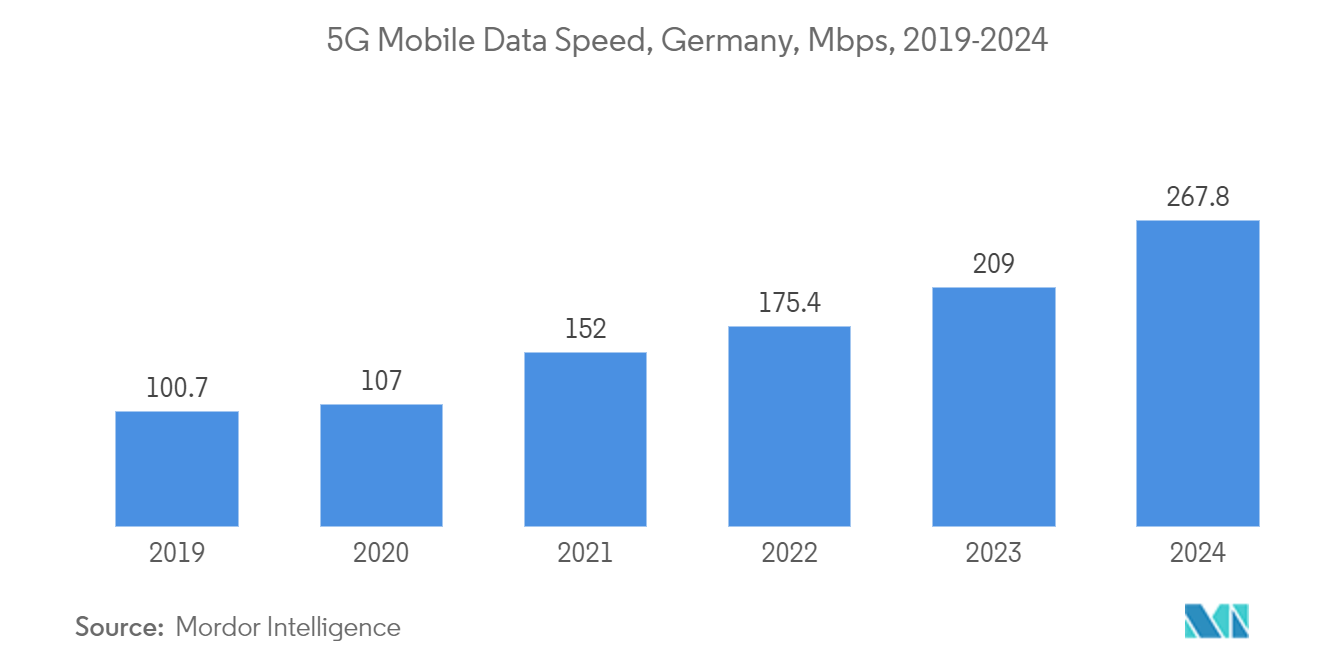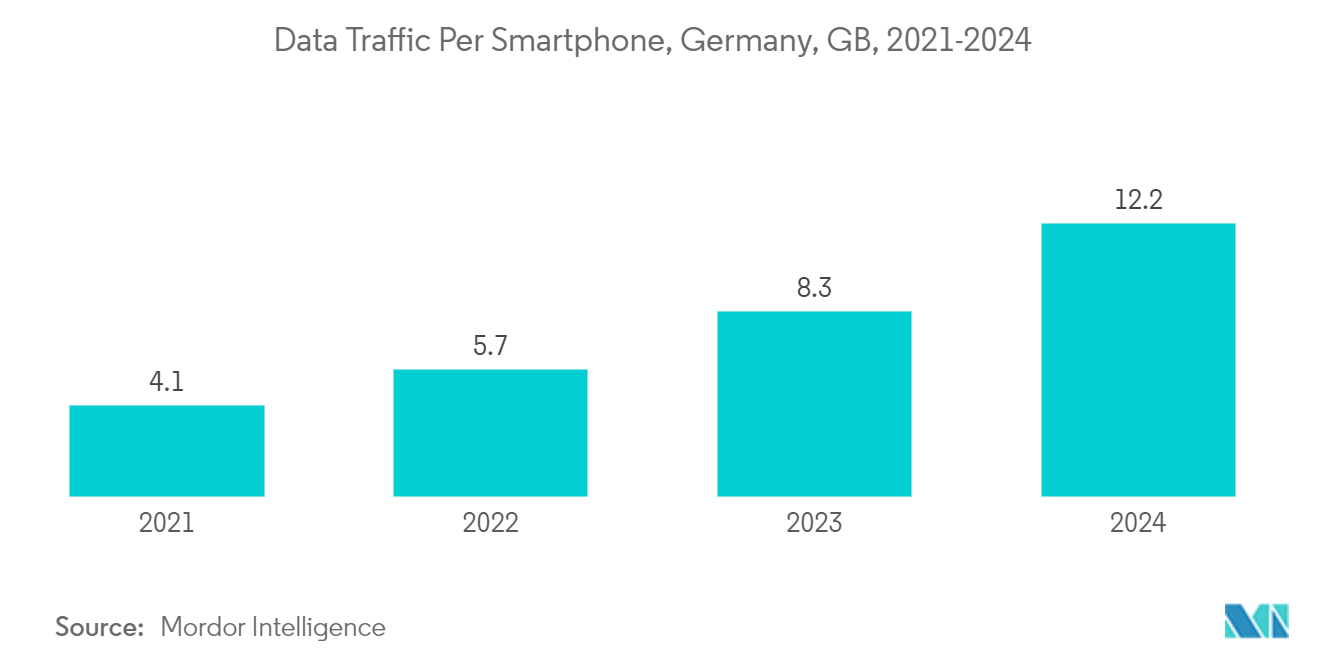Market Trends of Germany Data Center Cooling Industry
IT and Telecom to Hold Significant Share
- To oversee and champion digital transformation, the telecommunications industry is leaning toward institutionalization, positioning this evolution as a cornerstone for nurturing the digital economy and society. In Germany, the telecommunications industry grapples with a pressing issue: network congestion. As digital technologies surge and the appetite for high-speed internet grows, the current infrastructure struggles to keep pace. Consequently, this scenario is poised to spur a heightened demand for data center construction and innovative cooling solutions.
- Germany is actively addressing these challenges. A key strategy involves investing in new infrastructure, including fiber-optic cables and 5G networks. These advanced technologies promise faster speeds and increased capacity, effectively alleviating network congestion.
- Regulatory and policy measures can effectively tackle network congestion. A case in point is Germany's national broadband strategy, introduced by the government, which targets universal high-speed internet access for its citizens by 2025. The strategy encompasses funding for infrastructure projects, including data centers, and initiatives designed to foster competition among telecom providers.
- In 2024, Deutsche Telekom plans to extend its services to an additional 2.5 million customers annually. The company targets achieving 60% fiber-to-premises (FTTP) coverage on its infrastructure by 2030. This expansion is driving a significant surge in network traffic, consequently boosting the demand for servers and cooling solutions.

Liquid Cooling to Hold Significant Growth
- As data centers evolve, efficient cooling solutions become paramount to ensure optimal performance and manage the rising heat loads from contemporary IT equipment. Liquid cooling systems have emerged as a prominent technology in this domain.
- Air cooling alone cannot ensure the reliability of IT systems in facilities with exceptionally high-density racks, typically exceeding 30 kW, regardless of their age or optimization. In these facilities, rack power demands are nearing 20 kW, and companies are targeting 50 kW or higher. Therefore, liquid cooling is transitioning from an option to an absolute necessity. Notably, facilities like Cyrusone's Frankfurt 5 and Interxion's FRA-17, both under construction, are designed to accommodate this high rack density.
- In May 2023, a new draft proposed reducing heat reuse mandates, starting with a 10% heat reuse target in 2026 and ramping up to 20% by 2028. The GDA highlighted the need for adjustments, pointing out the variability in waste heat demand and the challenge of siting data centers near heating networks. The forthcoming act is poised to eliminate the stipulation mandating all data centers be within 5 km of a heating network. Instead, data centers can meet the requirement by equipping new facilities with a heat transfer station, making them ready to offer waste heat. However, achieving this will necessitate robust cooling solutions, like water-based cooling, to ensure stability during heat generation and transfer.
- Moreover, cloud infrastructure allows users to retrieve their files from anywhere in the world. Approximately 83% of companies in Germany utilize cloud services. Among these, 46% have reached an advanced stage of cloud implementation, 38% are just starting, and the remaining 16% have yet to adopt cloud solutions. As cloud infrastructure expands, it is anticipated that the demand for data centers will rise, subsequently boosting the need for water-cooling solutions.


